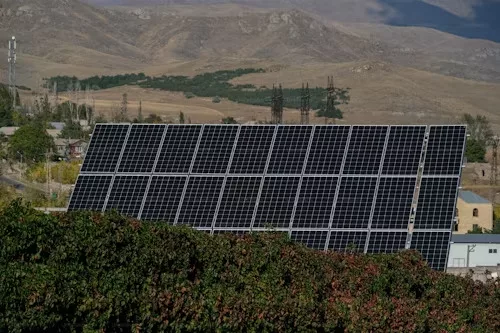In Albuquerque, New Mexico, researchers at Sandia National Laboratories and New Mexico State University are at the forefront of developing self-healing electrical grids. Unlike the fantastical notions of mini-robots repairing power lines, this advanced concept is materializing through a series of sophisticated algorithms capable of withstanding natural and human threats, promising sustained power to critical facilities without the direct intervention of human operators or costly infrastructure.
Fulfilling the Vision of Self-repairing Grid Systems
The collaboration aims to integrate these innovative algorithms into the grid’s protective relays, permitting the rapid reestablishment of electricity to pivotal points such as hospitals and grocery stores in the immediate aftermath of disruptive events. Michael Ropp, Electrical Engineer at Sandia and project lead, emphasizes the project’s reliance on local measurements, distancing itself from fragile and expensive communication linkages in favor of autonomous, efficient restoration.
The Future Grid: Adaptable, Renewable, and Autonomous
The envisioned grid is expected to leverage a higher influx of renewable energy sources like solar and wind alongside localized energy storage units, such as battery arrays. These distributed energy resources will empower microgrids to form self-sufficient “islands,” capable of continued operation even during main grid failures. Central to this initiative is the seamless self-repair of microgrids, ensuring they can autonomously manage energy balance, reconfigure post-damages, and avoid creating problematic configurations such as involuntary circuit loops.
Moving away from expensive and sometimes unreliable high-speed communications systems, these innovations prioritize local device measurements to execute self-healing processes. This approach not only curtails expenses but also fortifies the grid against cyber threats and ensures unremitting functionality during catastrophes.
Adapting to Renewable Energy Dominance
The preponderance of renewable energy sources beckons a necessary recalibration of the grid’s operational logic. This adjustment is particularly imperative in scenarios where power demand overshadows supply. Addressing this challenge, the Sandia-led team devised algorithms capable of detecting voltage irregularities in overburdened inverters, empowering an automated, prioritized disconnection from the grid to maintain stability.
In disaster recovery efforts, it’s crucial to maintain energy flow to essential services such as healthcare facilities and water treatment plants. The team’s algorithms facilitate such prioritization, enabling the grid to circumvent damaged segments and deliver power to structures of paramount importance.
Navigating Potential Microgrid Pitfalls
Microgrids introduce greater resilience but also new complexities such as potential circuit loop formation. By evaluating mathematical markers, Sandia researchers have successfully crafted techniques to measure and determine whether connecting two grid sections would inadvertently create a problematic loop, thereby reinforcing overall stability.
Moreover, the team is addressing the concerns of power lines encountering higher-than-rated currents through innovative solutions. They’ve conceptualized a method akin to Morse code, where voltage modulation by an overloaded line communicates with subordinate relays to disengage, reducing strain on the system using the line itself as the signal carrier.
Expanding the Horizon with Real-world Applications
The pursuit ahead involves aligning with relay manufacturers to integrate the algorithm library into their products, followed by rigorous testing in controlled environments and real-world application in test facilities like Sandia’s Distributed Energy Technologies Laboratory. Integrating these advanced resilient grid solutions bears the potential to benefit communities, especially those without resources for expensive communications systems, by offering a robust and adaptable power infrastructure.
This ground-breaking project, supported by Sandia’s Laboratory Directed Research and Development program and the Department of Energy‘s Office of Electricity Microgrid Program, has engaged the bright minds of undergraduates, master’s students, and interns from esteemed institutions like the Georgia Institute of Technology and Duke University, all contributing to the computational modeling and furthering the initiative.
